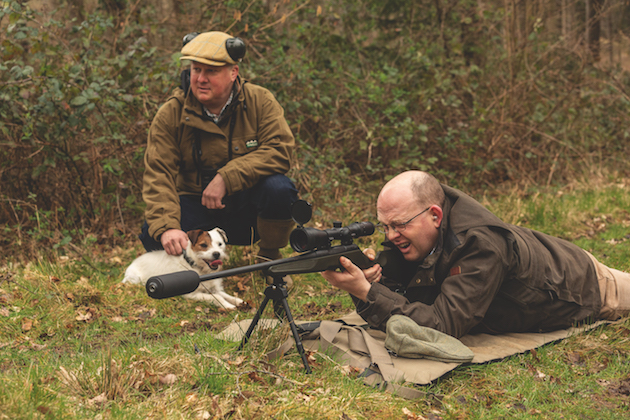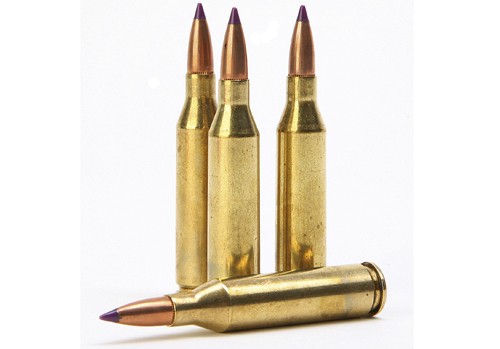How to pass your DSC1
Charles Smith-Jones tells you how to prepare yourself to pass your DSC1 and face the assessments with confidence
The .243 calibre is a user-friendly cartridge for shooting deer, mostly roe, and perhaps the occasional fox at ranges out to 200 yards...
Would you like to speak to our readers? We offer sponsored articles and advertising to put you in front of our audience. Find out more. Richard Macnair shooting the .243
Usd 17 April 19 stalking
Richard Macnair shooting the .243
Usd 17 April 19 stalking
As a reader said: ‘The ground shook, the grass smoked, the noise was deafening; there was muzzle flip, flash and felt recoil to excess! It might have been a black-powder experience.’
I don’t think he enjoyed the experience. I also get the impression that he was wearing inadequate ear protection (if any) and shooting from the prone position which increases felt recoil.
Rifle shooting is meant to be pleasurable – so here are some ways of reducing unpleasant side effects.
In Scotland the issue could be fixed immediately by recommending he try a .222, but the reader lives in England where the .222 is not a legal option for roe. So we need a rifle firing a cartridge of at least .240 calibre, which produces a minimum of 1,700 foot/pounds of energy at the muzzle. And it mustn’t kick, make too much noise or ignite the grass!

.243 rifle bullets
To shoot usefully flat out to 200 yards means close to 3,000 feet per second muzzle velocity. If we then zero the rifle one inch high at 100 yards, the bullet will be about an inch and three quarters low at 200 and a hold on the top of the back will dispatch the fox cleanly.
Much less velocity and we have to start judging range more accurately and allowing for the correct bullet drop. And if we zero higher at 100 yards there’s more risk of shooting over the top of a small target at short range.
This will minimise the muzzle blast and recoil in one fell swoop. Admittedly they do nothing for the look or handling of the rifle, but they do diminish recoil and muzzle blast. A reflex type of moderator doesn’t make the rifle too unwieldy to handle as it only increases the barrel’s length by about four inches.
Now what about the calibre legal for roe that can hit a fox at 200 yards? You might be thinking .243. Whereas I am not a fan, a lot of people in the UK think this calibre is excellent.

A .243 fitted with a sound moderator would make an excellent fox rifle.
A .243 fitted with a sound moderator would make an excellent fox rifle. Use suitable bullets and it would be fine for deer. But I think he could better.
We want a deer rifle for shooting fox, rather than the other way around. In which case, there are better deer cartridges than shooting the .243 calibre.
An anoraky, rifle crank might go for a .250- 3000 or .257 Roberts, but sticking to more conventional cartridges with easily available ammunition, my own choice would always be the 6.5×55, sometimes known as the Swedish Mauser.
I used one for 10 years on everything from roe to Red and was always satisfied. Bullets are available from 85 grains to 160 grains, so there’s plenty of choice, but I tended to use 140-grain bullets for everything. This saved having to re-zero the rifle constantly. If fox were a regular requirement, then perhaps 120-129 grain bullets at higher velocity would be a better all-round choice.
There are also a couple of cartridges based on the .243/.308 case which are serious contenders for this job.
Charles Smith-Jones tells you how to prepare yourself to pass your DSC1 and face the assessments with confidence
The deer seasons in the UK have been precisely organised to give deer protection when they need it, to produce…
Sound moderators – or suppressors – are used to reduce the amount of noise and visible muzzle flash your firearm…
First is the .260 Remington, which has similar ballistics to the 6.5×55 and would be an equally good choice were it not for the fact that I have heard reports, both here and in the USA, of accuracy problems.
I don’t know whether this problem has been solved but I haven’t tried one and neither has anyone else I know.
We come to the 7mm-08. This is popular with good reason and is an excellent deer cartridge. It drives bullets of 140 grains at around 2,900 feet per second – and lighter ones even faster!
Very similar, and a good choice for the more traditionally minded, is the 7mm Mauser, also called the 7×57 or .275 Rigby.
Try out any of these cartridges and you should find you get the performance you wants with minimal trauma if you fire a well-designed rifle of the right weight, fitted with a sound moderator.
The ban on lead shot for all game shooting is moving apace so it’s time to find the best eco-friendly ammunition that suits you and your rifle
If you’re buying your first clay gun, the right fit takes precedence – not good looks, the brand your mate’s got or even price – warns Paul Austin